Pakistan
Islamic Republic of Pakistan اسلامی جمہوریہ پاکِستان Islāmī Jumhūrī-ye Pākistān | |
|---|---|
| Motto: اتحاد، تنظيم، يقين مُحکم Ittehad, Tanzim, Yaqeen-e-Muhkam (Urdu) "Unity, Discipline and Faith" | |
| Anthem: "Qaumi Tarana" | |
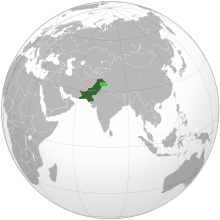 | |
| Capital | Islamabad |
| Largest city | Karachi |
| Official languages | Urdu (National) English (Government) |
| Regional languages | Punjabi, Pashto, Sindhi, Seraiki and Balochi |
| Demonym(s) | Pakistani |
| Government | Parliamentary republic federal democratic republic |
| Asif Ali Zardari (PPP) | |
| Yousaf Raza Gillani (PPP) | |
| Farooq Hamid Naek (PPP) | |
| Fahmida Mirza (PPP) | |
| Iftikhar Muhammad Chaudhry | |
| Formation | |
| from the United Kingdom | |
• Declared | 14 August 1947 |
| 23 March 1956 | |
| Area | |
• Total | 803,940 km2 (310,400 sq mi) (36th) |
• Water (%) | 3.1 |
| Population | |
• 2009 estimate | 180,808,000[1] (6th) |
• 1998 census | 132,352,279[2] |
• Density | 224.9/km2 (582.5/sq mi) (55th) |
| GDP (PPP) | 2008 estimate |
• Total | $422.392 billion[3] |
• Per capita | $2,624[3] |
| GDP (nominal) | 2008 estimate |
• Total | $164.557 billion[3] (47th) |
• Per capita | $1,022[3] |
| Gini (2002) | 30.6 medium inequality |
| HDI (2007) | Error: Invalid HDI value (141st) |
| Currency | Pakistani Rupee (Rs.) (PKR) |
| Time zone | UTC+5 (PST) |
• Summer (DST) | UTC+6 (PDT) |
| Drives on | left |
| Calling code | 92 |
| ISO 3166 code | PK |
| Internet TLD | .pk |
Pakistan (Urdu: پاکِستان), officially the Islamic Republic of Pakistan, is a country in South Asia.[5][6][7][8] It has a 1,046 kilometre (650 mile) coastline along the Arabian Sea and Gulf of Oman in the south, and is bordered by Afghanistan and Iran in the west, India in the east and the People's Republic of China in the far northeast.[9] Tajikistan also lies very close to Pakistan but is separated by the narrow Wakhan Corridor. Thus, it occupies a crossroads between South Asia, Central Asia and the Middle East.[10]
The region forming modern Pakistan was at the heart of the ancient Indus Valley Civilisation and then later was the recipient of Vedic, Persian, Turco-Mongol, Indo-Greek and Islamic cultures. The area has witnessed invasions and/or settlements by the Aryans, Persians, Greeks, Arabs, Turks, Afghans, Mongols, Sikhs and the British.[11]
In addition to the Indian independence movement which demanded an independent India, the Pakistan Movement (led by Muhammad Ali Jinnah of the Muslim League), which also sought an independent India, sought an independent state for the majority Muslim populations of the eastern and western regions of British India. The British granted independence and also the creation of the Muslim majority state of Pakistan that comprised the provinces of Sindh, North-West Frontier Province, West Punjab, Balochistan and East Bengal. With the adoption of its constitution in 1956, Pakistan became an Islamic republic. In 1971, a civil war in East Pakistan resulted in the creation of Bangladesh.
Pakistan's history has been characterized by periods of military rule and political instability. It is a developing country that faces problems with high levels of poverty and illiteracy. It is also the sixth most populous country in the world and has the second largest Muslim population in the world after Indonesia.[12][13][14][15][16][17][18][19] Pakistan has the second largest Shia Muslim population in the world.[14]. It is the world's only Muslim-majority nuclear state. Pakistan is a member of the Commonwealth of Nations, Next Eleven economies and the D8.
Etymology
The name Pakistan (Hindustani pronunciation: [paːkɪsˈtaːn] ) means Land of (the) Pure in Urdu and Persian (Farsi). It was coined in 1934 as Pakstan by Choudhary Rahmat Ali, who published it in his pamphlet Now or Never.[20] The name is a portmanteau representing the "thirty million Muslims of PAKISTAN, who live in the five Northern Units of British Raj — Punjab, Afghania (now known as North-West Frontier Province), Kashmir, Sindh, and Balochistan."[21]
History

The Indus region, which covers a considerable amount of Pakistan, was the site of several ancient cultures including the Neolithic era Mehrgarh and the Bronze era Indus Valley Civilisation (2500 BCE – 1500 BCE) at (Harappain district Sahiwal) and Mohenjo-Daro.[22]
Waves of conquerors and migrants from the west—including Harappan, Indo-Aryan, Persian, Greek, Saka, Parthian, Kushan, Hephthalite, Afghan, Arab, Turkics and Mughal—settled in the region through out the centuries, influencing the locals and being absorbed among them.[23] Ancient empires of the east—such as the Nandas, Mauryas, Sungas, Guptas, and the Palas—ruled these territories at different times from Patliputra.
However, in the medieval period, while the eastern provinces of Punjab and Sindh grew aligned with Indo-Islamic civilisation, the western areas became culturally allied with the Iranian civilisation of Afghanistan and Iran.[24] The region served as crossroads of historic trade routes, including the Silk Road, and as a maritime entreport for the coastal trade between Mesopotamia and beyond up to Rome in the west and Malabar and beyond up to China in the east.

Modern day Pakistan was at the heart of the Indus Valley Civilisation ;that collapsed in the middle of the second millennium BCE and was followed by the Vedic Civilisation, which also extended over much of the Indo-Gangetic plains. Successive ancient empires and kingdoms ruled the region: the Achaemenid Persian empire[25] around 543 BCE, Greek empire founded by Alexander the Great[26] in 326 BCE and the Mauryan empire there after.
The Indo-Greek Kingdom founded by Demetrius of Bactria included Gandhara and Punjab from 184 BCE, and reached its greatest extent under Menander, establishing the Greco-Buddhist period with advances in trade and culture. The city of Taxila (Takshashila) became a major centre of learning in ancient times—the remains of the city, located to the west of Islamabad, are one of the country's major archaeological sites. The Rai Dynasty (c.489–632) of Sindh, at its zenith, ruled this region and the surrounding territories.
In 712 CE, the Arab general Muhammad bin Qasim[27] conquered Sindh and Multan in southern Punjab. The Pakistan government's official chronology states that "its foundation was laid" as a result of this conquest.[28] This Arab and Islamic victory would set the stage for several successive Muslim empires in South Asia, including the Ghaznavid Empire, the Ghorid Kingdom, the Delhi Sultanate and the Mughal Empire. During this period, Sufi missionaries played a pivotal role in converting a majority of the regional Buddhist and Hindu population to Islam.

The gradual decline of the Mughal Empire in the early eighteenth century provided opportunities for the Afghans, Balochis and Sikhs to exercise control over large areas until the British East India Company[29] gained ascendancy over South Asia. The Indian Rebellion of 1857, also known as the Indian Mutiny, was the region's last major armed struggle against the British Raj, and it laid the foundations for the generally unarmed freedom struggle led by the Indian National Congress in the twentieth century. In the 1920s and 1930, a movement led by Mahatma Gandhi, and displaying commitment to ahimsa, or non-violence, millions of protesters engaged in mass campaigns of civil disobedience.[30]
The All India Muslim League rose to popularity in the late 1930s amid fears of under-representation and neglect of Muslims in politics. On 29 December 1930, Allama Iqbal's presidential address called for an autonomous "state in northwestern India for Indian Muslims, within the body politic of India."[31] Muhammad Ali Jinnah espoused the Two Nation Theory and led the Muslim League to adopt the Lahore Resolution of 1940, popularly known as the Pakistan Resolution. In early 1947, Britain announced the decision to end its rule in India. In June 1947, the nationalist leaders of British India—including Nehru and Abul Kalam Azad on behalf of the Congress, Jinnah representing the Muslim League and Master Tara Singh representing the Sikhs—agreed to the proposed terms of transfer of power and independence.
The modern state of Pakistan was established on 14 August 1947 (27 Ramadan 1366 in the Islamic Calendar), carved out of the two Muslim-majority wings in the eastern and northwestern regions of British India and comprising the provinces of Balochistan, East Bengal, the North-West Frontier Province, West Punjab and Sindh. The controversial, and ill-timed, division of the provinces of Punjab and Bengal caused communal riots across India and Pakistan — millions of Muslims moved to Pakistan and millions of Hindus and Sikhs moved to India. Disputes arose over several princely states including Muslim-majority Jammu and Kashmir, whose Hindu ruler had acceded to India following an invasion by Pashtun tribal militias, leading to the First Kashmir War in 1948.

From 1947 to 1956, Pakistan was a Dominion in the Commonwealth of Nations. It became a Republic in 1956, but the civilian rule was stalled by a coup d’état by General Ayub Khan, who was president during 1958–69, a period of internal instability and a second war with India in 1965. His successor, Yahya Khan (1969–71) had to deal with a devastating cyclone—which caused 500,000 deaths in East Pakistan—and also face a civil war in 1971. Economic grievances and political dissent in East Pakistan led to violent political tension and military repression that escalated into a civil war.[32] After nine months of guerrilla warfare between Pakistan Army and the Bengali Mukti Bahini militia backed by India, later Indian intervention escalated into the Indo-Pakistani War of 1971, and ultimately to the secession of East Pakistan as the independent state of Bangladesh.[33]
Civilian rule resumed in Pakistan from 1972 to 1977 under Zulfikar Ali Bhutto, until he was deposed and later sentenced to death in 1979 by General Zia-ul-Haq, who became the country's third military president. Ul-Haq introduced the Islamic Sharia legal code, which increased religious influences on the civil service and the military. With the death of President Zia in a plane crash in 1988, Benazir Bhutto, daughter of Zulfikar Ali Bhutto, was elected as the first female Prime Minister of Pakistan. Over the next decade, she fought for power with Nawaz Sharif as the country's political and economic situation worsened. Pakistan got involved in the 1991 Gulf War and sent 5,000 troops as part of a U.S.-led coalition, specifically for the defence of Saudi Arabia.[34]
Military tensions in the Kargil conflict[35] with India were followed by a Pakistani military coup d'état in 1999[36] in which General Pervez Musharraf assumed vast executive powers. In 2001, Musharraf became President after the controversial resignation of Rafiq Tarar. After the 2002 parliamentary elections, Musharraf transferred executive powers to newly-elected Prime Minister Zafarullah Khan Jamali, who was succeeded in the 2004 prime-ministerial election by Shaukat Aziz. On 15 November 2007 the National Assembly completed its tenure and new elections were called. The exiled political leaders Benazir Bhutto and Nawaz Sharif were permitted to return to Pakistan. However, the assassination of Benazir Bhutto during the election campaign in December led to postponement of elections and nationwide riots. Bhutto's Pakistan Peoples Party (PPP) won the largest number of seats in the elections held in February 2008 and its member Yousaf Raza Gillani was sworn in as Prime Minister.[37] On 18 August 2008, Pervez Musharaff resigned from the presidency when faced with impeachment.[38] Presently, (as the year 2009 nears its end), more than 3 million Pakistani civilians have been displaced by the on going conflict in North-West Pakistan between the government and Taliban militants.[39]
Government and politics
Template:National Symbols of Pakistan The first Constitution of Pakistan was adopted in 1956, but was suspended in 1958 by General Ayub Khan. The Constitution of 1973—suspended in 1977, by Zia-ul-Haq, but re-instated in 1985—is the country's most important document, laying the foundations of the current government.[23] Pakistan is a semi-presidential federal democratic republic with Islam as the state religion.[40]
The bicameral legislature comprises a 100-member Senate and a 342-member National Assembly. The President is the Head of State and the Commander in Chief of the Armed Forces and is elected by an electoral college. The prime minister is usually the leader of the largest party in the National Assembly. Each province has a similar system of government with a directly elected Provincial Assembly in which the leader of the largest party or alliance becomes Chief Minister. Provincial Governors are appointed by the President.[40]
The Pakistani military has played an influential role in mainstream politics throughout Pakistan's history, with military presidents ruling from 1958–71, 1977–88 and from 1999–2008.[41] The leftist Pakistan Peoples Party, led by Zulfikar Ali Bhutto, won support after the loss of East Pakistan but was overthrown amidst riots in 1977.[42] Under the military rule of Muhammad Zia-ul-Haq, during the 1980s, the anti-feudal, pro-Muhajir Muttahida Qaumi Movement (MQM) was started by unorthodox and educated urban dwellers of Sindh and particularly Karachi. The 1990s were characterized by coalition politics dominated by the Pakistan Peoples Party and a rejuvenated Muslim League.[40]
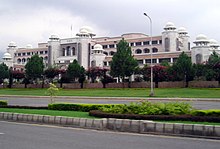
Pakistan is an active member of the United Nations (UN) and the Organisation of the Islamic Conference (OIC), the latter of which Pakistan has used as a forum for Enlightened Moderation, a plan to promote a renaissance and enlightenment in the Muslim world.[40] Pakistan is also a member of the South Asian Association for Regional Cooperation (SAARC) and the Economic Cooperation Organisation (ECO).[40] In the past, Pakistan has had mixed relations with the United States; in the early 1950s, Pakistan was the United States' "most allied ally in Asia"[43] and a member of both the Central Treaty Organisation (CENTO) and the Southeast Asia Treaty Organisation (SEATO).
During the Soviet-Afghan War in the 1980s Pakistan was a major U.S. ally.[citation needed] But relations soured in the 1990s, when sanctions were imposed by the U.S. over Pakistan's refusal to abandon its nuclear activities.[44] However, the American War on Terrorism, as an aftermath of 11 September 2001 attacks in U.S.A., led to an improvement in U.S.–Pakistan ties, especially after Pakistan ended its support of the Taliban regime in Kabul. Its positive side was evidenced by a major increase in American military aid, providing Pakistan $4 billion more in three years after the 9/11 attacks than before.[45] On the other hand, Pakistan is presently burdened with nearly 3 million displaced civilions due to the on going Afghan war. Since 2004, Pakistan has been referred to as part of the Greater Middle East by the U.S.[46]
On 18 February 2008, Pakistan held its general elections after Benazir Bhutto's assassination postponed the original date of 8 January 2008.[47] The Pakistan Peoples Party won the majority of the votes and formed an alliance with the Pakistan Muslim League (N). They nominated and elected Yousaf Raza Gilani as Prime Minister of Pakistan.[48] On 18 August 2008, Pervez Musharraf resigned as President of Pakistan amidst increasing calls for his impeachment.[49] In the presidential election that followed, Asif Ali Zardari of Pakistan People's Party won by a landslide majority and became President of Pakistan.[50]
Subdivisions
Pakistan is a federation of four provinces, a capital territory and federally administered tribal areas. The government of Pakistan exercises de facto jurisdiction over the western parts of the disputed Kashmir region,[9] organized as two separate political entities (Azad Kashmir and Northern Areas)
Template:Pakistani Provinces and Territories
The third tier of government was composed of 26 divisions with two further tiers (districts and tehsils) administered directly from the provincial level. The divisions were abolished in 2001[51] and a new three-tiered system of local government came into effect comprising districts, tehsils and union councils with an elected body at each tier. There are currently 107 districts in Pakistan proper, each with several tehsils and union councils. The tribal areas comprise seven tribal agencies and six small frontier regions detached from neighbouring districts whilst Azad Kashmir comprises seven districts and Northern Areas comprises six districts.[52]
Demographics

The estimated population of Pakistan in 2009 was over 180,800,000[1][53] making it the world's sixth most-populous country, behind Brazil and ahead of Russia. By the year 2020, the country's population is expected to reach 208 million, owing to a relatively high growth rate.[54] About 20 % of the population live below the international poverty line of US$1.25 a day.[55] Population projections for Pakistan are relatively difficult because of the differences in the accuracy of each census and the inconsistencies between various surveys related to the fertility rate, but it is likely that the rate of growth peaked in the 1980s and has since declined significantly.[56]
The majority of southern Pakistan's population lives along the Indus River. By population size, Karachi is the biggest city of Pakistan.[57] In the northern half, most of the population lives about an arc formed by the cities of Lahore, Faisalabad, Rawalpindi, Islamabad, Gujranwala, Sialkot, Gujrat, Jhelum, Sargodha and Sheikhupura. In the past, the country's population had a relatively high growth rate that has, however, been moderated by declining fertility and birth rates. Dramatic social changes have led to rapid urbanization and the emergence of megacities. During 1990–2003, Pakistan sustained its historical lead as the most urbanized nation in South Asia, with city dwellers making up 34% of its population.[58]
Pakistan has a multicultural and multi-ethnic society and hosts one of the largest refugee populations in the world as well as a young population. Approximately 1.7 million Afghan refugees remain in Pakistan.[59] Nearly half of this population actually was born and grew up in Pakistan during the last 30 years, so they have never seen Afghanistan.[60][61] They are not counted in the national census, even the ones born in Pakistan, because they are still considered citizens of Afghanistan. About 8 million Muhajirs—then roughly one-fourth of the country’s population—arrived from India after the independence in 1947.[62] The Urdu-speaking Muhajirs make up nearly half of the Karachi’s 17 million residents,[63] with Punjabis and Pashtuns also having sizable communities in the city.[64]
Template:List of Pakistani cities by population
Languages
| Rank | Language | 2008 estimate: Speakers | 1998 census: Speakers | Percentage | Native Speakers |
|---|---|---|---|---|---|
| 1 | Punjabi | 76,367,360 | 58,433,431 | (44.15%) | Punjab |
| 2 | Pashto | 26,692,890 | 20,408,621 | (15.42%) | NWFP |
| 3 | Sindhi | 24,410,910 | 18,661,571 | (14.1%) | Sindh |
| 4 | Seraiki | 18,019,610 | 13,936,594 | (10.53%) | South Punjab |
| 5 | Urdu | 13,120,540 | 10,019,576 | (7.57%) | Karachi |
| 6 | Balochi | 6,204,840 | 4,724,871 | (3.57%) | Balochistan |
| 7 | Others | 8,083,850 | 6,167,515 | (4.66%) | Pakistan |
| 8 | Total | 172,900,000 | 132,352,279 | (100%) | Pakistan |
Pakistan is a multilingual country with more than sixty languages being spoken.[65] English is the official language of Pakistan and used in official business, government, and legal contracts,[23] while Urdu is the national language.

Punjabi is the provincial language of Punjab. Pashto is the provincial language of NWFP. Sindhi is the provincial language of Sindh and Balochi is the provincial language of Balochistan.
Other languages include Aer, Badeshi, Bagri, Balti, Bateri, Bhaya, Brahui, Burushaski, Chilisso, Dameli, Dehwari, Dhatki, Domaaki, Farsi (Dari), Gawar-Bati, Ghera, Goaria, Gowro, Gujarati, Gujari, Gurgula, Hazaragi, Hindko (two varieties), Jadgali, Jandavra, Kabutra, Kachchi (Kutchi), Kalami, Kalasha, Kalkoti, Kamviri, Kashmiri, Kati, Khetrani, Khowar, Indus Kohistani, Koli (three varieties), Lasi, Loarki, Marwari, Memoni, Od, Ormuri, Pahari-Potwari, Pakistan Sign Language, Palula (Phalura), Sansi, Savi, Shina (two varieties), Torwali, Ushojo, Vaghri, Wakhi, Waneci, and Yidgha.[66] Some of these are endangered languages with a relatively small number of speakers and others have hundreds of thousands of speakers.
Most of the languages belong to the Indo-Iranian branch of the Indo-European family. The exceptions are Burushaski, which is a language isolate; Balti, which is Sino-TIbetan; and Brahui, which is Dravidian.
Religions
Pakistan is the second-most populous Muslim-majority country[12][13] and also has the second-largest Shi'a population in the world.[14] About 95% of the Pakistanis are Muslim, of which nearly 75% are Sunni and 20% are Shi'a.[23] Although the two groups of Muslims usually coexist peacefully, sectarian violence occurs sporadically.[67]
The religious breakdown of the country is as follows[23]:
- Islam 173,000,000 (96%) (nearly 70% are Sunni Muslims and 20% are Shi'a Muslims).
- Hinduism 3,200,000 (1.85%)
- Christianity 2,800,000 (1.6%)
- Sikhs Around 20,000 (0.001%)
- The remaining are Parsis, Ahmadis, Buddhists, Jews, Bahá'ís, and Animists (mainly the Kalasha of Chitral).[68]
Health
Life expectancy at birth was 63 for females and 62 for males in 2006.[69] Healthy life expectancy at birth was at 54 for males and 52 for females in 2003.[69] Expenditure on health was at 2% of the GDP in 2006.[69] The mortality below 5 was at 97 per 1,000 live births in 2006.[69]
Military

The armed forces of Pakistan are an all-volunteer force and are the sixth-largest in the world. The three main services are the Army, Navy and the Air Force, supported by a number of paramilitary forces which carry out internal security roles and border patrols. The National Command Authority is responsible for exercising employment and development control of all strategic nuclear forces and organizations.
The Pakistan military first saw combat in the First Kashmir War, gaining control of what is now Azad Kashmir. In 1961, the army repelled a major Afghan incursion on Pakistan's western border.[70] Pakistan and India would be at war again in 1965 and in 1971. In 1973, the military quelled a Baloch nationalist uprising. During the Soviet-Afghan war, Pakistan shot down several intruding pro-Soviet Afghan aircraft and provided covert support to the Afghan mujahideen through the Inter-Services Intelligence agency. In 1999, Pakistan was involved in the Kargil conflict with India. Currently, the military is engaged in an armed conflict with extremist Islamic militants in the north-west of the country.
The Pakistani armed forces were the largest contributor to United Nations peacekeeping efforts, with more than 10,000 personnel deployed in 2007[71] and are currently the largest contributor.[72] In the past, Pakistani personnel have volunteered to serve alongside Arab forces in conflicts with Israel. Pakistan provided a military contingent to the U.N.-backed coalition in the first Gulf War.[73]
Pakistan's military employs armaments that include atomic weapons, mobile vehicle ballistic missile systems, laser communication systems, armored cars and tanks, and multi-role fighter/bomber jets.
Geography and climate

Pakistan covers 340,403 square miles (881,640 km2),[74] approximately equalling the combined land areas of France and the United Kingdom. Its eastern regions are located on the Indian tectonic plate and the western and northern regions on the Iranian plateau and Eurasian landplate. Apart from the 1,046-kilometre (650 mi) Arabian Sea coastline, Pakistan's land borders total 6,774 kilometres—2,430 kilometres (1,509 mi) with Afghanistan to the northwest, 523 kilometres (325 mi) with China to the northeast, 2,912 kilometres (1,809 mi) with India to the east and 909 kilometres (565 mi) with Iran to the southwest.[23]

The northern and western highlands of Pakistan contain the towering Karakoram and Pamir mountain ranges, which incorporate some of the world's highest peaks, including K2 (28,250 ft; 8,611 m) and Nanga Parbat (26,660 ft; 8,126 m). The Balochistan Plateau lies to the west, and the Thar Desert and an expanse of alluvial plains, the Punjab and Sind, lie to the east. The 1,000-mile-long (1,609-km) Indus River and its tributaries flow through the country from the Kashmir region to the Arabian Sea.[75]
Pakistan has four seasons: a cool, dry winter from December through February; a hot, dry spring from March through May; the summer rainy season, or southwest monsoon period, from June through September; and the retreating monsoon period of October and November. The onset and duration of these seasons vary somewhat according to location.[76] Rainfall can vary radically from year to year, and successive patterns of flooding and drought are also not uncommon.[77]
Flora and fauna
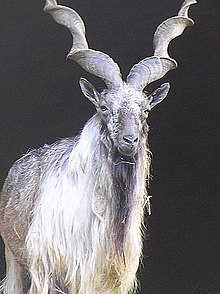
The national animal of Pakistan is the Markhor and the national bird is the Chukar, also known as Chakhoor in Urdu.[78] The wide variety of landscapes and climates in Pakistan allows for a wide variety of wild animals and birds. The forests range from coniferous alpine and subalpine trees such as spruce, pine, and deodar cedar in the northern mountains to deciduous trees such as the mulberry-type Shisham in the Sulaiman range in the south. The western hills have juniper and tamarisk as well as coarse grasses and scrub plants. Along the southern coast are mangrove forests which form much of the coastal wetlands.[79]
In the south, there are crocodiles in the murky waters at the mouth of the Indus River whilst on the banks of the river, there are boars, deer, porcupines, and small rodents. In the sandy scrublands of central Pakistan are found jackals, hyenas, wild cats, panthers, and leopards while the clear blue skies abound with hawks, falcons, and eagles. In the southwestern deserts are rare Asiatic cheetahs. In the northern mountains are a variety of endangered animals including Marco Polo sheep, Urial sheep, Markhor and Ibex goats, black and brown Himalayan bears, and the rare Snow Leopard. During August 2006, Pakistan donated an orphaned snow leopard cub called Leo to USA.[80] Another rare species is the blind Indus River Dolphin of which there are believed to be about 1,100 remaining, protected at the Indus River Dolphin Reserve in Sindh.[81] In recent years the number of wild animals being killed for fur and leather trading led to a new law banning the hunting of wild animals and birds and the establishment of several wildlife sanctuaries and game reserves. The number of hunters have greatly dwindled since then.[82]
Economy
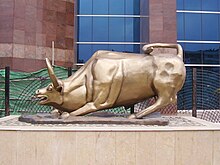

Despite being a very poor country in 1947, Pakistan's economic growth rate was better than the global average during the subsequent four decades, but imprudent policies led to a slowdown in the late 1990s.[83] Recently, wide-ranging economic reforms have resulted in a stronger economic outlook and accelerated growth especially in the manufacturing and financial services sectors.[83] Since the 1990s, there has been great improvement in the foreign exchange position and rapid growth in hard currency reserves.[83] The 2005 estimate of foreign debt was close to US$40 billion. However, this has decreased in recent years with assistance from the International Monetary Fund and significant debt-relief from the United States. Pakistan's gross domestic product, as measured by purchasing power parity, is estimated to be US$475.4 billion[84] while its per capita income stands at $2,942.[84] The poverty rate in Pakistan is estimated to be between 23%[85] and 28%.[86] GDP growth was steady during the mid 2000s at a rate of 7%;[87][88] however, slowed down during the Economic crisis of 2008 to 4.7%.[23] A large inflation rate of 24.4% and a low savings rate, and other economic factors, continue to make it difficult to sustain a high growth rate.[89][90][91] Pakistan's GDP is US$167 billions, which makes it the 48th-largest economy in the world or 27th largest by purchasing power adjusted exchange rates. Today, Pakistan is regarded as to having the second largest economy in South Asia.[92]
The structure of the Pakistani economy has changed from a mainly agricultural base to a strong service base. Agriculture now only accounts for roughly 20% of the GDP, while the service sector accounts for 53% of the GDP.[93] Significant foreign investments have been made in several areas including telecommunications, real estate and energy.[94][95] Other important industries include apparel and textiles (accounting for nearly 60% of exports), food processing, chemicals manufacture, and the iron and steel industries.[96] Pakistan's exports in 2008 amounted to $20.62 billion (USD).[23] Pakistan is a rapidly developing country.[97][98][99] However, the Economic crisis of 2008 led Pakistan to seek more than $100 billion in aid in order to avoid possible bankruptcy.[100][101] This was never given to Pakistan and therefore it had to depend on a more aggressive fiscal policy, backed by the IMF.A year later Asian Development Bank Reports Pakistan economic crisis easing in 2009 [102].Furthermore it is projected that in 2010 Pakistan economy would grow at least 4 percent and could grow more with strong international economic recovery[103].
Education

Education in Pakistan is divided into five levels: primary (grades one through five); middle (grades six through eight); high (grades nine and ten, leading to the Secondary School Certificate); intermediate (grades eleven and twelve, leading to a Higher Secondary School Certificate); and university programmes leading to graduate and advanced degrees.[106]
Pakistan also has a parallel secondary school education system in private schools, which is based upon the curriculum set and administered by the Cambridge International Examinations, in place of government exams. Some students choose to take the O level and A level[107] exams through the British Council.
There are currently 730 technical & vocational institutions in Pakistan.[108] The minimum qualifications to enter male vocational institutions, is the completion of grade 8. The programmes are generally two to three years in length. The minimum qualifications to enter female vocational institutions, is the completion of grade 5.[109] All academic education institutions are the responsibility of the provincial governments. The federal government mostly assists in curriculum development, accreditation and some financing of research.
English medium education is to be extended, on a phased basis, to all schools across the country.[110] Through various educational reforms, by the year 2015, the ministry of education expects to attain 100% enrolment levels amongst primary school aged children, and a literacy rate of 86% amongst people aged over 10.[111]
Pakistan also has madrassahs that provide free education and also offer free boarding and lodging to students who come mainly from the poorer strata of society.[112] After criticism over terrorists using them for recruiting purposes, efforts have been made to regulate them.[113]
Society and culture
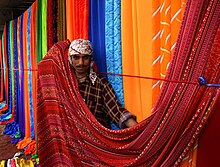
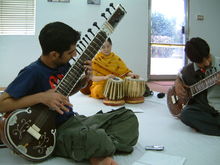
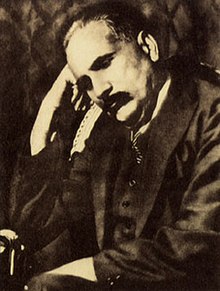
Pakistani society is largely hierarchical, with high regard for traditional Islamic values, although urban families have grown into a nuclear family system because of the socio-economic constraints imposed by the traditional joint family system.[114] Recent decades have seen the emergence of a middle class in cities like Karachi, Lahore, Rawalpindi, Hyderabad, Faisalabad, Multan and Peshawar that wish to move in a more centrist direction, as opposed to the northwestern regions bordering Afghanistan that remain highly conservative and dominated by centuries-old regional tribal customs. Increasing globalization has resulted in ranking 46th on the A.T. Kearney/FP Globalization Index.[115]
The variety of Pakistani music ranges from diverse provincial folk music and traditional styles such as Qawwali and Ghazal Gayaki to modern forms fusing traditional and western music, such as the synchronisation of Qawwali and western music by the world renowned Nusrat Fateh Ali Khan. In addition Pakistan is home to many famous folk singers such as the late Alam Lohar, who is also well known in Indian Punjab. However, majority of Pakistanis listen to Indian music produced by Bollywood and other Indian film industries. The arrival of Afghan refugees in the western provinces has rekindled Pashto and Persian music and established Peshawar as a hub for Afghan musicians and a distribution centre for Afghan music abroad.[116] State-owned Pakistan Television Corporation (PTV) and Pakistan Broadcasting Corporation were the dominant media outlets, but there are now numerous private television channels. Various American, European, and Asian television channels and films are available to the majority of the Pakistani population via private Television Networks, cable, and satellite television. There are also small indigenous film industries based in Lahore and Peshawar (often referred to as Lollywood). And while Bollywood films have been banned from being played in public cinemas since 1965 they have remained popular in popular culture[117].

The architecture of the areas now constituting Pakistan can be designated to four distinct periods—pre-Islamic, Islamic, colonial and post-colonial. With the beginning of the Indus civilization around the middle of the 3rd millennium[118] B.C., an advanced urban culture developed for the first time in the region, with large structural facilities, some of which survive to this day.[119] Mohenjo Daro, Harappa and Kot Diji belong to the pre-Islamic era settlements. The rise of Buddhism and the Persian and Greek influence led to the development of the Greco-Buddhist style, starting from the 1st century CE. The high point of this era was reached with the culmination of the Gandhara style. An example of Buddhist architecture is the ruins of the Buddhist monastery Takht-i-Bahi in the northwest province. The arrival of Islam in today's Pakistan meant a sudden end of Buddhist architecture.[120] However, a smooth transition to predominantly pictureless Islamic architecture occurred. The most important of the few completely discovered buildings of Persian style is the tomb of the Shah Rukn-i-Alam in Multan. During the Mughal era design elements of Islamic-Persian architecture were fused with and often produced playful forms of the Hindustani art. Lahore, occasional residence of Mughal rulers, exhibits a multiplicity of important buildings from the empire, among them the Badshahi mosque, the fortress of Lahore with the famous Alamgiri Gate, the colourful, still strongly Persian seeming Wazir Khan Mosque as well as numerous other mosques and mausoleums. Also the Shahjahan Mosque of Thatta in Sindh originates from the epoch of the Mughals. In the British colonial period, predominantly functional buildings of the Indo-European representative style developed from a mixture of European and Indian-Islamic components. Post-colonial national identity is expressed in modern structures like the Faisal Mosque, the Minar-e-Pakistan and the Mazar-e-Quaid.
The literature of Pakistan covers the literatures of languages spread throughout the country, namely Urdu, Sindhi, Punjabi, Pushto, Baluchi as well as English[121] in recent times and in the past often Persian as well. Prior to the 19th century, the literature mainly consisted of lyric poetry and religious, mystical and popular materials. During the colonial age the native literary figures, under the influence of the western literature of realism, took up increasingly different topics and telling forms. Today, short stories enjoy a special popularity.[122] The national poet of Pakistan, Allama Muhammad Iqbal, suggested the creation of a separate homeland for the Muslims of India. However, Iqbal had also wrote the Tarana-e-Hind which stated the belief of a strong united India. His book The Reconstruction of Religious Thought in Islam is a major work of modern Islamic philosophy. The most well-known representative of the contemporary Urdu literature of Pakistan is Faiz Ahmed Faiz. Sufi poetry Shah Abdul Latif, Bulleh Shah and Khawaja Farid are also very popular in Pakistan.[123] Mirza Kalich Beg has been termed the father of modern Sindhi prose.[124]
Tourism

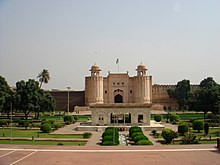
Despite having an image problem, hyped particularly in the West, and once alleged as one of the most dangerous countries in the world by the British magazine "The Economist",[125] tourism is still a growing industry in Pakistan because of its diverse cultures, peoples and landscapes.[126] The variety of attractions ranges from the ruins of ancient civilizations such as Mohenjo-daro, Harappa and Taxila, to the Himalayan hill-stations, that attract those interested in field and winter sports. Pakistan also has several mountain peaks of height over 7,000 metres (22,970 ft), that attract adventurers and mountaineers from around the world, especially to K2.[127] Starting in April to September, domestic and international tourists visit these areas helping tourism become a source of income for the local people. Majority of the tourists are from other Asian countries.
in Balochistan there are many Caves for cavers and tourists to visit specially the Juniper Shaft Cave, the Murghagull Gharra cave, Mughall saa cave, and naturally decorated cave, Pakistan is member country to UIS (Union of International Speleology)[128]
The northern parts of Pakistan are the site of several historical fortresses, towers and other architecture. Including the Hunza and Chitral valleys, the latter being home to the Kalash, a small pre-Islamic Animist community.[129] Punjab is also the site of Alexander's battle on the Jhelum River. The historic city of Lahore is considered Pakistan's cultural centre and has many examples of Mughal architecture such as the Badshahi Masjid, Shalimar Gardens, Tomb of Jahangir and the Lahore Fort.[130] The Pakistan Tourism Development Corporation (PTDC) also helps promote tourism in the country.[131] However, tourism is still limited because of the lack of proper infrastructure and the worsening security situation in the country. The recent militancy in Pakistan's scenic sites, including Swat and NWFP, has given a massive blow to the tourism industry.[132] Much of the trouble is also being blamed on: the frail travel network, tourism regulatory framework, low prioritization of the tourism industry by the government, low effectiveness of marketing and a constricted tourism perception.[133].Furthermore Pakistan had received over 500,000 tourist before global economic recession [134]
Sports
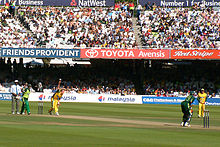
The official and national sport of Pakistan is field hockey, although cricket is more popular. The national cricket team has won the Cricket World Cup once (in 1992), were runners-up once (in 1999), and co-hosted the games twice (in 1987 and 1996). Pakistan were runners-up in the inaugural 2007 ICC World Twenty20 held in South Africa and are the champions of 2009 ICC World Twenty20 held in England. Squash is another sport that Pakistanis have excelled in, with successful world-class squash players such as Jahangir Khan and Jansher Khan winning the World Open several times during their careers.
At an international level, Pakistan has competed many times at the Summer Olympics in field hockey, boxing, athletics, swimming, and shooting. Pakistan's medal tally remains at 10 medals (3 gold, 3 silver and 4 bronze) while at the Commonwealth Games and Asian Games it stands at 61 medals and 182 medals respectively. Hockey is the sport in which Pakistan has been most successful at the Olympics, with three gold medals in (1960, 1968, and 1984). Pakistan has also won the Hockey World Cup a record four times (1971, 1978, 1982, 1994). The Motorsport Association of Pakistan is a member of the Fédération Internationale de l'Automobile[135]. in Caving adventure sports Pakistan is member country to UIS (Union of International Speleology)[128] The Freedom Rally is a yearly off-road race which takes place during the Independence celebrations. Pakistan also qualified for the Golf World Cup for the first time in 2009.[136]
Outline of Pakistan
See also
- Outline of Pakistan
- Index of Pakistan-related articles
- Board of Investment
- List of Pakistanis
- Kirani
References
- ^ a b Department of Economic and Social Affairs
Population Division (2009). "World Population Prospects, Table A.1" (.PDF). 2008 revision. United Nations. Retrieved 2009-03-12.
{{cite journal}}: Cite journal requires|journal=(help); line feed character in|author=at position 42 (help) - ^ "Area, Population, Density and Urban/Rural Proportion by Administrative Units". Population Census Organization, Government of Pakistan. Retrieved 2008-02-13.
- ^ a b c d "Pakistan". International Monetary Fund. Retrieved 2009-10-01.
- ^ "Human Development Report 2009. Human development index trends: Table G" (PDF). The United Nations. Retrieved 2009-10-05.
- ^ "Pakistan". Encarta Encyclopedia. Retrieved 2009-02-22.
- ^ http://news.bbc.co.uk/1/hi/world/south_asia/2608713.stm
- ^ http://www.dawn.com/wps/wcm/connect/dawn-content-library/dawn/news/pakistan/16-the-politics-of-pipelines-hs-05
- ^ http://www.issi.org.pk/journal/2007_files/no_2/article/a3.htm
- ^ a b The Kashmir region is claimed by Pakistan and India. Pakistan refers to Indian-administered Kashmir as Indian occupied Kashmir.
- ^ Pakistan: a global studies handbook By Yasmeen Niaz Mohiuddin
- ^ Pakistan "Pakistan". InfoPlease. Retrieved 2009-02-22.
{{cite web}}: Check|url=value (help) - ^ a b Robert Ayres (1998). Turning Point: The End of the Growth Paradigm. James & James/Earthscan. p. 63. ISBN 1853834394.
- ^ a b "Muslim Population - Statistics About the Muslim Population of the World". About.com. Retrieved 2009-07-27.
- ^ a b c "PakistanPaedia - Religions in Pakistan". PakistanPaedia. Retrieved 2009-07-27.
- ^ http://news.bbc.co.uk/1/hi/in_depth/8296200.stm
- ^ http://news.yahoo.com/s/ap/20091008/ap_on_re_us/us_rel_muslim_population
- ^ http://beta.dawn.com/wps/wcm/connect/dawn-content-library/dawn/news/world/08-global-muslim-population-hits-157-billion-ts-01
- ^ http://pewforum.org/docs/?DocID=450
- ^ http://pewforum.org/newassets/images/reports/Muslimpopulation/Muslimpopulation.pdf
- ^ Choudhary Rahmat Ali (28 January 1933). "Now or never: Are we to live or perish for ever?". Columbia University. Retrieved 2007-12-04.
- ^ Wolpert, Stanley A. (1984). Jinnah of Pakistan. New York: Oxford University Press. ISBN 0195034120.
- ^ Minnesota State University page on Mohenjo-Daro.
- ^ a b c d e f g h "Pakistan". World Factbook. CIA. Retrieved 2008-02-13. Cite error: The named reference "ciafactbook" was defined multiple times with different content (see the help page).
- ^ Wright, John W. (1997). Universal Almanac. New York: Andrews & McMeel Publishing. ISBN 0836221877.
- ^ Jona Lendering. "Achaemenids". Retrieved 2009-03-12.
- ^ "Plutarch's Life of Alexander". Retrieved 2009-03-12.
- ^ "Infinity Foundation's translation of the Chach-Nama". Retrieved 2009-03-12.
- ^ "History in Chronological Order". Government of Pakistan.
- ^ "A Country Study: Pakistan". Library of Congress. Retrieved 2009-03-12.
- ^ Concise Encyclopedia. Dorling Kindersley Limited. 1997. p. 455. ISBN 0-7513-5911-4.
- ^ "Sir Muhammad Iqbal's 1930 Presidential Address". Speeches, Writings, and Statements of Iqbal. Retrieved 2006-12-19.
- ^ "1971 war summary". BBC. 2002. Retrieved 2009-03-16.
- ^ "US Country Studies article on the Bangladesh War". U.S. Library of Congress. Retrieved 2009-03-16.
- ^ "The 1991 Gulf war". San Francisco Chronicle. 2002-09-24. Retrieved 2009-03-16.
- ^ "India launches Kashmir air attack". BBC News. 1999-05-26. Retrieved 2008-08-05.
- ^ "Pakistan after the coup: Special report". BBC. 2000-10-12. Retrieved 2009-03-17.
- ^ "New Pakistan PM Gillani sworn in". BBC. 2008-03-25. Retrieved 2009-03-17.
- ^ Reza Sayah (2008-08-18). "Musharraf's resignation accepted". CNN. Retrieved 2009-03-17.
- ^ 3.4 million displaced by Pakistan fighting. United Press International. May 30, 2009.
- ^ a b c d e "Government of Pakistan". Retrieved 2009-03-16.
- ^ "World: South Asia Pakistan's army and its history of politics". BBC. 1999-12-10. Retrieved 2009-03-16.
- ^ M. Zafar. "How Pakistan Army moved into the Political Arena". Retrieved 2009-03-15.
- ^ Robert Nolan. "Pakistan: The Most Allied Ally in Asia". Retrieved 2009-03-12.
- ^ "Why America Should Be A Trustworthy Friend of Pakistan". Retrieved 2009-03-16.
- ^ "Pakistan's $4.2 Billion 'Blank Check' for U.S. Military Aid, After 9/11, funding to country soars with little oversight". Center for Public Integrity. 2007-03-27.
{{cite news}}: Unknown parameter|coauthors=ignored (|author=suggested) (help) - ^ The United States’ new backyard. by Alain Gresh. Le Monde diplomatique. November 2007.
- ^ Ahmed Rashid (2007-01-10). "Pakistan's uncertain year ahead". BBC News. Retrieved 2008-04-02.
- ^ "Pakistani prime minister frees judges". AP. 2008-03-24.
{{cite news}}:|access-date=requires|url=(help) - ^ Associated Press (2008-08-18). "Pakistani President Musharraf Resigns Amid Impeachment Threats". Fox News. Retrieved 2008-08-18.
- ^ "Zardari wins Pakistan presidential election: officials". AFP. 2008-09-05. Retrieved 2009-03-17.
- ^ "What is Decentralization Support Program". Decentralization Support Program, Government of Pakistan. Retrieved 2008-02-08.
- ^ Gwillim Law (2004-03-20). "Divisions of Pakistan". Retrieved 2009-03-16.
- ^ 2009 World Population Data Sheet - Population Reference Bureau
- ^ "UN world population prediction, 2006". UN. Retrieved 2009-03-17.
- ^ Human Development Indices, Table 3: Human and income poverty, p. 35. Retrieved on 1 June 2009
- ^ Feeney and Alam (2003). "Pakistan Fertility" (PDF). Retrieved 2009-03-17.
- ^ The Urban Frontier — Karachi. NPR.org. 2 June 2008.
- ^ World Bank Group, Urbanization (urban population table)
- ^ UNHCR and Pakistan sign new agreement on stay of Afghan refugees, March 13, 2009.
- ^ Voice of America, Pakistan Extends Deadline for Afghan Refugees
- ^ Government of Pakistan – National Database & Registration Authority (NADRA), NADRA Has Registered 2.15 Million Afghan Refugees, February 15, 2007.
- ^ muhajir (people). Britannica Online Encyclopedia.
- ^ "In a city of ethnic friction, more tinder". The National. August 24, 2009.
- ^ "Karachi violence stokes renewed ethnic tension". IRIN Asia. May 17, 2007.
- ^ Ethnologue: Languages of the World (unknown ed.). SIL International.[This citation is dated, and should be substituted with a specific edition of Ethnologue]
- ^ Gordon, Raymond (2005). "Languages of Pakistan". Retrieved 2009-03-17.
- ^ "Bomb kills four at Pakistan Shiite funeral: police". AFP. 2009-02-19. Retrieved 2009-03-16.
- ^ "International Religious Freedom Report 2007". State Department, US. 2007. Retrieved 2009-03-21.
- ^ a b c d http://www.who.int/countries/pak/en/
- ^ Ian Talbot (1999). The Armed Forces of Pakistan. Macmillan. p. 99. ISBN 0312216068.
- ^ "Monthly Summary of Contributors to UN Peacekeeping Operations" (PDF). United Nations. Retrieved 2007-04-20.
- ^ "Monthly Summary of Contributors to UN Peacekeeping Operations" (PDF). United Nations. Retrieved 2009-10-08.
- ^ "Pakistan Army". Pakistan Defense. Retrieved 2009-03-11.
- ^ The area of Pakistan proper excludes the regions administered in Kashmir URL accessed on 03 November 2006.
- ^ InfoPlease. "Pakistan". Retrieved 2009-03-16.
- ^ U.S. Library of Congress. "Climate". Retrieved 2009-03-16.
- ^ "Pakistna Climate". Encyclopedia of the Nations. 2008-03-28. Retrieved 2009-03-16.
- ^ "Basic Facts". Pakistan Ministry of Information and Broadcasting. Retrieved 2009-03-12.
- ^ "Conservation of Mangrove Forests in the Coastal Areas of Sindh and Balochistan". WWF Pakistan. Retrieved 2009-03-17.
- ^ "Leo the snow leopard is US-bound". BBC News. 2006-08-09. Retrieved 2008-08-05.
- ^ Paul Massicot (2006-06-21). "Animal Info:Indus River Dolphin". Retrieved 2009-03-17.
- ^ "Pakistan Wildlife". Wildlife Sanctuaries of Pakistan. Retrieved 2009-03-12.
- ^ a b c "Economy". Pakistan Trade Development Authority. Retrieved 2009-03-08.
- ^ a b "Report for Selected Countries and Subjects (PPP)". International Monetary Fund. 2007.
{{cite web}}: Unknown parameter|month=ignored (help) - ^ "WB, UNDP question poverty estimates". Dawn Group of Newspapers. 2006-06-20. Retrieved 2008-02-12.
- ^ "Pakistan: People". The World Factbook. CIA. Retrieved 2008-02-12.
- ^ "7% growth achieved in FY 05–06". Daily Times of Pakistan. 2006-12-01. Retrieved 2008-02-12.
- ^ "Pakistan Economy Registers 7% Growth Rate for 4th Consecutive Year". Pakistan Times. 2007-06-02. Retrieved 2008-02-12.
- ^ John Wall. "Concluding Remarks at the Pakistan Development Forum 2006". World Bank. Retrieved 2008-02-12.
- ^ "Country-by-Country Growth and Forecasts". Asian Development Bank. Retrieved 2008-02-12.
- ^ "View: Is GDP growth sustainable?". Daily Times Newspaper. 2006-05-01. Retrieved 2006-02-12.
- ^ [1]
- ^ "Sectoral Share in Gross Domestic Product" (PDF). Retrieved 2009-03-17.
- ^ "FDI to touch $7 billion by year-end: SBP governor". Daily Times of Pakistan. 2007-04-01. Retrieved 2008-02-12.
- ^ "Foreign investment to reach $7 billion during current fiscal: Governor SBP". Pak Tribune. 2007-04-01. Retrieved 2008-02-12.
- ^ "Pakistan Industry". Nations Encyclopedia. Retrieved 2009-03-17.
- ^ "GCC investments in Pakistan and future trends". Gulf Research Center. 2007-01-03. Retrieved 2008-02-12.
- ^ "Quid Pro Quo 45 – Tales of Success" (PDF). Muslim Commercial Bank of Pakistan. 2007-09-19. Retrieved 2008-02-12.
- ^ "Pakistan steels itself for sell-offs". BBC News. 2006-06-01. Retrieved 2008-02-12.
- ^ Isambard Wilkinson (2008-10-06). "Pakistan facing bankruptcy - Telegraph".
- ^ Con Coughlin (2008-10-10). "If Pakistan goes bust, the Taliban will rule the roost there as well - Telegraph".
- ^ [2]
- ^ [3]
- ^ http://unesdoc.unesco.org/images/0014/001459/145959e.pdf
- ^ http://www.statpak.gov.pk/depts/fbs/publications/lfs2007_08/results.pdf
- ^ "Diagnostic Report" (PDF). Ministry of Education, Government of Pakistan. Retrieved 2008-02-13.
- ^ "GCE O and A level exams in Pakistan". The British Council. Retrieved 2008-02-13.
- ^ "Medium Term Development framework 2005-10" (PDF). Ministry of Education, Government of Pakistan. Retrieved 2008-02-13.
- ^ Structure of Pakistani Education. World Education Services. Retrieved on 10 February 2008.
- ^ "Ministry of Education". Ministry of Education, Government of Pakistan. Retrieved 2008-02-13.
- ^ "National Plan of Action". Ministry of Education, Government of Pakistan. Retrieved 2008-02-13.
- ^ "PAKISTANI MADRASSAHS:". International Crisis Group. Retrieved 2009-02-21.
- ^ Synovitz, Ron. "Pakistan: Despite Reform Plan, Few Changes Seen At Most Radical Madrassahs". Radio Free Europe Radio Liberty. Retrieved 2009-02-21.
- ^ "Pakistan- Language, Religion, Culture, Customs and Etiquette". Kwint Essential. Retrieved 2009-03-17.
- ^ Kearney Foreign Policy Globalization Index.
- ^ Tohid, Owais Music soothes extremism along troubled Afghan border. Christian Science Monitor. Retrieved on 18 February 2008.
- ^ "Pakistan to show Bollywood film". BBC News. Retrieved 2008-02-13.
- ^ Dehejia, Vidja South Asian Art and Culture. The Metropolitan Museum of Art. Retrieved on 10 February 2008.
- ^ The Indus Valley And The Genesis Of South Asian Civilization [4] Retrieved on 6 February 2008.
- ^ Architecture in Pakistan: A Historical Overview. All Things Pakistan. Retrieved on 10 February 2008.
- ^ Shamsie, Muneeza Pakistani Writers in English: A Question of Identity. Sepia Mutiny. Retrieved on 9 February 2008.
- ^ Kamran, Gilani Pakistani Literature- Evolution & trends. The South Asian. Retrieved on 9 February 2008.
- ^ Shah Abdul Latif. Story of Pakistan. Retrieved on 9 February 2008.
- ^ Rahman, Mahmudur. "Renowned scholar of Sindh". DAWN newspaper. Retrieved 2008-02-09.
- ^ http://www.economist.com/opinion/displayStory.cfm?Story_ID=10430237
- ^ "Tourism in Pakistan". 2005-10-20. Retrieved 2008-04-05.
- ^ "PTDC page on mountaineering". Archived from the original on 2006-11-10.
- ^ a b http://www.uis-speleo.org/people/delegate.html
- ^ "Visiting". Empori Trade. Retrieved 2009-03-19.
- ^ "Attack terrorises Lahore's upscale commercial centre". Daily Times. 2009-03-04. Retrieved 2009-03-19.
- ^ "About PTDC". Retrieved 2009-03-19.
- ^ "Lanka-style policies sought to save Pakistan tourism". Daily Mirror. 2009-03-02. Retrieved 2009-03-19.
- ^ "Travel and Tourism Competitiveness Report 2009: Pakistan ranks 113 out of 130 countries". Daily Times. 2009-03-05. Retrieved 2009-03-19.
- ^ [ www.pakistan.gov.pk/.../tourism.../Toruism(wup)(Folder-II).pdf]
- ^ "Motorsport Association of Pakistan". Retrieved 2009-06-11.
- ^ http://www.dawn.com/wps/wcm/connect/dawn-content-library/dawn/news/sport/08-pakistan-qualify-for-world-cup-make-history-ts-06
Further reading
- Cohen, Stephen P. The Idea of Pakistan. The Brookings Institution. November 2004. ISBN 0-8157-1502-1.
- Banuazizi, Ali and Weiner, Myron. The State, Religion, and Ethnic Politics: Afghanistan, Iran, and Pakistan. Syracuse University Press. August 1988. ISBN 0-8156-2448-4.
- Halliday, Fred. State and Ideology in the Middle East and Pakistan. Monthly Review Pr. February 1998. ISBN 0-85345-734-4.
- Hammond Incorporated. Hammond Greater Middle East Region: Including Afghanistan, Pakistan, Libya, and Turkey. American Map Corporation. August 2002. ISBN 0-8437-1827-7.
- Hilton, Isabel. Letter from Pakistan: The Pashtun Code. The New Yorker. 3 December 2001.ISABEL HILTON (2001-12-03). "THE PASHTUN CODE". Archived from the original on 2007-02-02.
{{cite news}}:|archive-date=/|archive-url=timestamp mismatch; 2007-02-27 suggested (help) - Insight Guides, Halliday, Tony and Ikram, Tahir. Insight Guide Pakistan. Apa Productions. January 1998. ISBN 0-88729-736-6.
- Malik, Hafeez. Pakistan: Founders' Aspirations and Today's Realities. Oxford University Press, USA. May 2001. ISBN 0-19-579333-1.
- Malik, Iftikhar H. Religious Minorities in Pakistan. Minority Rights Group International. September 2002. ISBN 1-897693-69-9.[5]
- Malik, Iftikhar H. Culture and customs of Pakistan. Greenwood Press. December 2005. ISBN 031333126X.
- Najim, Adil. Pakistan and Democracy. The News International Pakistan. 6 May 2004."Pakistan and Democracy". Retrieved 2008-08-14.
- Rooney, John. Shadows in the dark: A history of Christianity in Pakistan up to the 10th century. Christian Study Centre. January 1984. OCLC 12177250
- Rahman, Tariq.1996. Language and Politics in Pakistan Karachi: Oxford University Press. Reprinted several times, latest repr. 2006.
- Rahman, Tariq .2002. Language, Ideology and Power: Language-learning Among the Muslims of Pakistan and North India Karachi: OUP.
- Rahman, Tariq .2004. Denizens of Alien Worlds: A Study of Education, Inequality and Polarization in Pakistan Karachi: OUP, 2006 repr.
- Sharif, Shuja. Musharraf's Administration And Pakistan's Economy. Contemporary Review. 31 March 2005. 129–134.
- Wolpert, Stanley. Jinnah of Pakistan. Oxford University Press, USA. May 1984. ISBN 0-19-503412-0.
- Zakaria, Rafiq. The Man Who Divided India: An Insight into Jinnah's Leadership and its Aftermath. Popular Prakashan. 2001. ISBN 81-7154-892-X.
- Statehood in South Asia.
- Strategic Insights, Volume III, Issue 10 (October 2004).
External links
- Government of Pakistan
- Pakistan Board of Investment
- PakVillage.com: Pakistan Culture, Poetry, Recipes, Fashion, News
- The President of Pakistan
- The Ministry of Information and Broadcasting
- Amazing Pakistan - Facts about Pakistan
- Chief of State and Cabinet Members
- "Pakistan". The World Factbook (2024 ed.). Central Intelligence Agency.
- Pakistan at UCB Libraries GovPubs
- Template:Dmoz
 Wikimedia Atlas of Pakistan
Wikimedia Atlas of Pakistan- Template:Wikitravel
- Pakistan, an external wiki
- Pakistaniaat: A Journal of Pakistan Studies
- Pakistan
- South Asian countries
- Countries of the Indian Ocean
- Developing 8 Countries member states
- English-speaking countries and territories
- Hindustani-speaking countries and territories
- Federal countries
- Former British colonies
- Iranian Plateau
- Islamic republics
- Members of the Commonwealth of Nations
- Organisation of the Islamic Conference members
- South Asia
- South Asian Association for Regional Cooperation member states
- States and territories established in 1947





